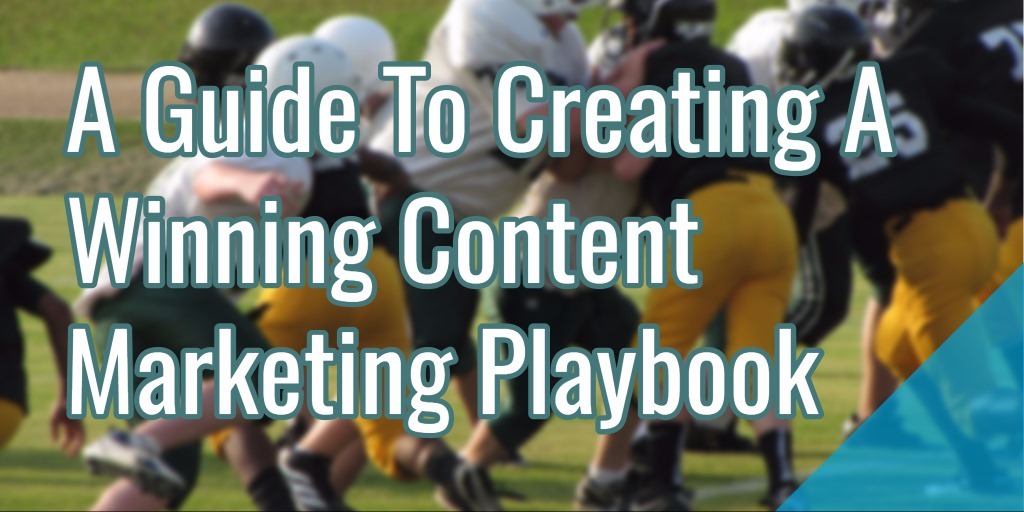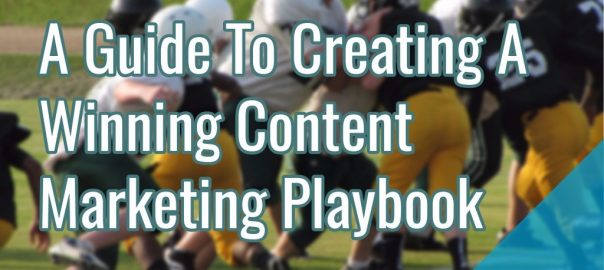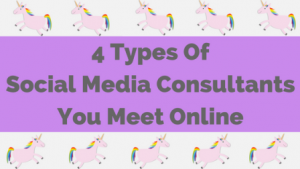
Who knew the movie Prometheus would teach us such a valuable lesson in content marketing but Michael Fassbender’s character was onto something when he said, “Big things have small beginnings.”
I’d like to expand upon this just a bit. All big ideas have small beginnings, but then transform into something extraordinary. This right here, I believe, is the true beauty of content marketing. No matter how small your team may be or little funded, each big marketing campaign to ever exist, first started as a tiny idea that blossomed.
For this to take fruition, however, you need a playbook, a guide so to speak, that provides direction for your content marketing. That’s what I hope to provide here. I believe there are 5 core phases (chapters) involved. In this blog, I’ll outline each chapter – Strategy, Creation, Syndication, Analysis, and Optimization – and provide actionable tips that you can apply to your own content marketing playbook with the end goal of ultimately driving brand awareness.
Chapter 1: Establish Your Strategy
You need to first start with a strategy which will serve as your roadmap to creating content that is valuable to your audience, and distinguishes your brand as a thought leader. It answers questions such as what content will you create, how will you create it, and how will you ultimately share it.
“A dream without a plan is just a wish.” Katherine Paterson
Establishing a winning strategy will help you later on to make informed decisions as you test and fine-tune your content. Set up brainstorm sessions either alone or with your team and gather ideas on what you’d like your content to be. To help with staying organized, use a free tool such asTrello tocreate easily moveable boards to collect your thoughts and ideas. I found Sujan Patel’s blog article on how he uses Trello to write 300 high-quality articles a year extremely useful.
As you finalize your content strategy, it’ll be good to write it down. Content Marketing Institute says themost effective content marketers are more likely to have a documented strategy.
Chapter 2: Create Your Content
Now that you have a strategy, you can begin creating content with purpose. Your brand’s success is tied directly to the content you produce. Use your strategy to guide each piece of content.
Think of it as a poker game. Creating content based on assumptions is like a player going all in with the hopes of getting lucky. It’s based entirely on chance. To be successful, this chapter of your content marketing playbook requires a more thought-out process to be effective. Valuable content will touch on the following aspects:
- Identify your audience’s pain points. Create content that educates and offers a solution.
- Create a list of topic ideas. Use sites like Quora to find topics most relevant to your audience.
- Develop reader personas. Knowing your audience and who you’re writing for is key
- Think and write with the “CURVE” method in mind to create more shareable content.
Creating content starts with understanding your audience, following your strategy guidelines, and ends with determining how influential your brand will be.
Chapter 3: Share Your Content
When it comes to syndicating content, the most popular methods are social media and via email campaigns.
Social media offers content marketers the unique opportunity to instantly connect with millions of consumers. With so many platforms and fierce competition, creating a social media strategy is that is effective can be challenging. Simplify things by focusing on a few social media networks and creating highly visual content.
In similar fashion, email marketing provides content marketers the chance to have a discussion one-on-one with someone. The trouble though lies in earning those email addresses. It takes time and resources to build up a quality list. Once you do, reward them by sharing your best content in newsletters.
Chapter 4: Analyze Your Content
Nearly every content marketing campaign will involve trial and error. Therefore, your strategy should account for fluidity, and allow for content to be adjusted based on the insights you discover through analysis.
Content Marketing Institute’s 2016 B2B Benchmarks, Budgets and Trends report found that only 30 percent of B2B marketers felt their organization was effective or very effective in its use of content marketing; and 34 percent had no clarity on what success even looked like. To better understand how your content marketing is performing, you should analyze these five metrics:
- The Message: Is your audience responding to your writing? Are you using the right terminology?
- The Format: Does your audience engage more with short snippets of content, such as a GIF or video? Or do they enjoy reading the 1000 word blog article?
- Traffic: Are people engaging with your content and visiting your website as a result?
- Customer Acquisition: Track customers along the customer journey to be able to deliver more targeted content that helps expedite the process from prospect to customer.
- Conversions: Measure how many people completed an action by engaging with your content. Actions can range from downloading your eBook or infographic to signing up for an upcoming webinar.
Chapter 5: Optimize Your Content
What good is your content if it can’t be found? This simple concept is what makes content optimization such a critical chapter in your content marketing playbook. Train yourself to always push the limit of what your content can and cannot do.
There are five key factors to consider when optimizing your content.
- Content Attractiveness: Does your content provide quality information in an appealing way? Half a second is all the time you have to capture someone’s attention before they move on.
- Content Consumability: Too small of font or font that’s not easily readable will push your readers away. To create content that’s easily consumable, use legible fonts, use colors that are easy on the eyes, write short sentences and paragraphs, and outline your content with section headers to help guide their eyes as they read and scan through your content.
- Content Effectiveness: Once you’ve earned someone’s attention, how effective is your content at keeping their attention? According toJakob Nielsen, you have 10 to 20 seconds before your average visitor leaves. Make every piece of content a doorway to your business through interlinking, compelling cta’s and by making it easy to contact you.
- Search Findability: Optimizing your content for search engines like Google is at the core of content optimization. Do so by including keywords, meta descriptions and alt-tags in images.
- Social Media Shareability: If your content is valuable and If you make it easy to share, people will likely do so. Include social sharing buttons, links to your social media profiles and click-to-tweet statements throughout the body of your content.
At the end of the day, content marketing is about more than just writing great content. With the right playbook, your brand will be able to have personal connections with consumers as they read and interact with your content, ultimately driving brand awareness.
* Adapted lead image: Public Domain, pixabay.com via getstencil.com
The post A Guide To Creating A Winning Content Marketing Playbook appeared first on Search Engine People Blog.
Search Engine People Blog(86)






